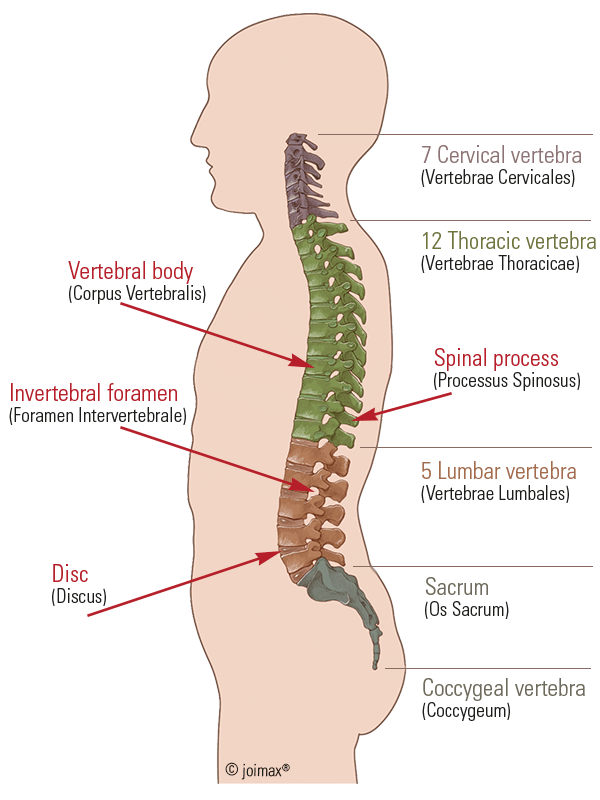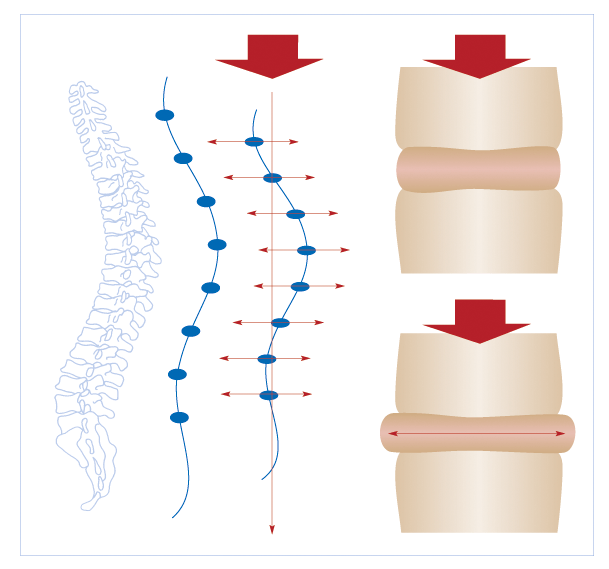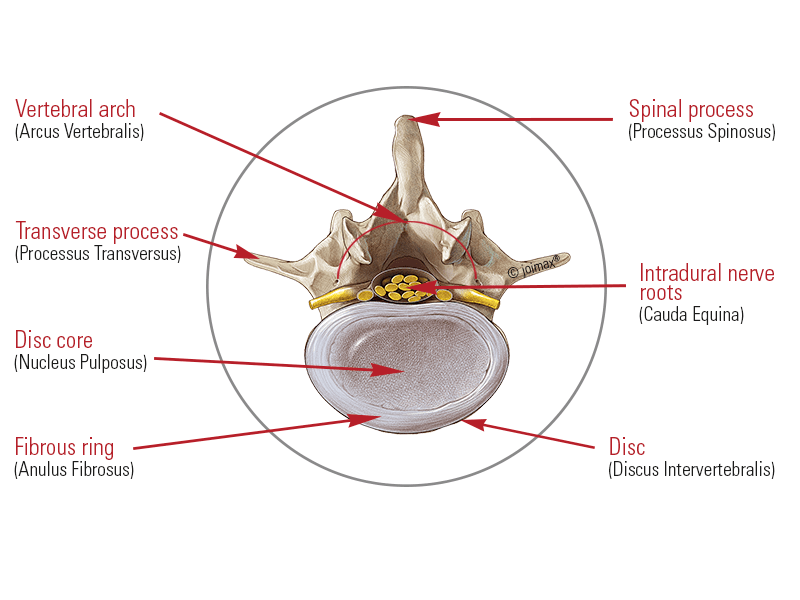About the Spine
A sophisticated natural structural design consisting of bones, ligaments, tendons, intervertebral discs, muscles and nerves ensures that the multifunctional, multitalented spine fulfills all our movements optimally.
Structure of the spinal column
The central axis of our body enables movements and activities in various directions and at the same time ensures stability.
Our spine consists of 24 vertebrae which can be divided into three sections: the cervical spine with seven cervical vertebrae, the thoracic spine with 12 thoracic vertebrae and the lumbar spine with five lumbar vertebrae. Below, follow the sacrum and coccyx built up from a total of nine vertebrae. At the age between 20 and 25 these nine vertebrae will fuse together and form one single bone.
Mobility and stability
The intervertebral discs lie between the vertebrae and connect them to the characteristic double-S shape. They have a gelatinous, soft, water-rich core which is coated by a cartilaginous fibre ring. This structure allows for the complex movements of the spine. In addition the discs can absorb shocks and prevent the bones from rubbing against each other. Muscles and ligaments provide for stability and controlled movement. They are attached at the two transverse processes and the spinous process.
Protection for sensitive nerves
A vertebra consists of an anterior solid vertebral body and the posterior vertebral arch with the facet joints and vertebral processes. The vertebral bodies act as the load carrier, while the vertebral arches form a protective canal where the spinal cord passes. Between each two vertebrae is an intervertebral foramen. Here, the spinal nerves exit to the left and right, thus leaving the area protected.
The intervertebral discs lie between the vertebrae and connect them to the characteristic double-S shape. They have a gelatinous, soft, water-rich core which is coated by a cartilaginous fiber ring.
This structure allows the complex movements of the spine. In addition the discs can absorb shocks and prevent the bones from rubbing against each other. Muscles and ligaments provide stability and controlled movement. They are attached at the two transverse processes and the spinous process.
This finely tuned, multi-functional system of mobility, stability and protection is exposed to various stressors in everyday life. Normal aging or accidents can cause functional damages to the spine. Then, immobility, pain and neurological symptoms may occur.





